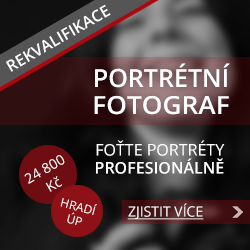maseczki
maseczka antywirusowa A medical mask, also referred to as an oral or facial mask, is supposed to be worn by medical professionals in healthcare settings. It's designed to prevent inhalation of bacteria and droplets from the air by capturing airborne bacteria which are shed in the mouth and nostrils of the wearer and catching them in a protective covering.
There are many different forms of medical masks available and are used by many different medical professionals. Other uses include protecting the respiratory system from chemical irritants and contaminants, reducing exposure to harmful agents, preventing damage to the eyes, skin, and nasal cavities and helping to protect the skin from burns and abrasions.
The many diverse materials used to create medical masks vary from latex to silicon. Latex masks have long been a preferred material by many medical professionals for their ability to resist bacteria and other contaminants while maintaining adequate ventilation. But while they're resistant to infections and contamination, latex masks can deteriorate and may not provide sufficient ventilation or are too thin. While they are more durable than many other kinds of health mask materials, they aren't ideal for extended periods of use.
Polystyrene, also known as Styrofoam or High-Density Silicon, is a relatively new type of medical mask material. This sort of mask is similar to a plastic container, which is generally produced from a high density foam that has an airtight seal when filled with medical waste and placed within the hospital.
Styrofoam is typically thick enough to prevent germs from entering the patient's respiratory system and is designed in such a way that air can be pumped through the mask immediately. Because it's not thick, it's also able to move around freely, keeping the nose clean and the mouth dry and preventing contamination from the individual 's sneezing, coughing or breathing deeply. They're more expensive than other medical mask materials but have shown to be an effective option for hospital employees.
Silicone is a natural product and so will not degrade over time like other materials. It has a water-resistant covering and can be easily molded into any shape or form, which makes it very versatile. for use in medical environments. However, it is not as readily cleaned as other substances and requires regular replacement or professional cleaning.
Since these masks are intended for use by healthcare employees, they should be cleaned and disinfected on a regular basis to help keep the patient and staff protected. This should be done by a trained professional using antibacterial solutions, which is typically included in any equipment bought by the hospital or medical facility.
Cleaning is simple since the materials are nonporous and there are no chemicals used to clean them. They require just a simple wipe down with a damp cloth or wet wash cloth to remove excess moisture and bacteria. In cases of excessive wear, like in the case of prolonged hospital work hours, it's important to wash the mask often to prevent contamination and ensure a fresh infection-free atmosphere.
The solution should then be permitted to sit for 30 minutes, so it doesn't soak into the mask but rather to the skin beneath. After the sanitizer was implemented, it's important to rinse the mask off completely with clean water to remove any remaining sanitizer.
Cleaning masks at the hospital can be a pain for the staff members, but if done properly can prevent infections and reduce costs by protecting the employees and patients from contaminants which could infect them. Even a simple solution of one cup of bleach diluted in 2 quarts of water is enough to purge and sterilize the mask, preventing it from spreading germs and possibly causing a severe infection.
Although sanitizing is quite important other than the obvious reason of avoiding contamination, the mask itself might also need sanitizing to remove food, drink or other substance which can get into the air during use. By way of instance, if there are patients that are in and out of the room throughout the course of this day, the mask can frequently become contaminated during their use. Cleaning this area of the mask using a bleach solution gives a clean-air area that prevents contamination and allows the air to flow freely. Bleach solutions may also be used to sanitize tools and instruments in the room, as well as clean up droppings from patients and staff.
